“Very often Paris is considered a museum-city, frozen in its elegant Haussmanian avenues, monuments, and upscale districts…..But when you stray from the beaten track, you realize this is not the case at all: Paris innovates and reinvents itself every day.” – Nicolas Le Goff, “Another Paris”
Paris is a perfect city for walking. It’s not large, every space is worth seeing and something new lies around each corner.
Nowhere is that last bit more true than in the eastern arrondissements. There, far from the classic tourist sights, is revealed a city buzzing with diversity, ethnicity, grittiness and funkiness. (And some bad neighborhoods, to be sure.)
I’ve done a fair amount of exploring in those parts of town, but never systematically. Le Goff’s 2019 book was an ideal way in. And the timing was opportune since France no longer requires masks to be worn out of doors. Sightseeing is more fun when your glasses aren’t fogged up and you can breathe properly.
I chose the trip from the Gare du Nord to Saint-Ouen and started at Eglise Saint Vincent de Paul, in the 10th arrondissement. As soon as I walked up the the steps on the east side of the church, I saw a richly decorated façade. It turned out to be the house and workshop of Francois Gillet, a 19th-century painter who was also a ceramicist.

From there, I walked over to the Gare du Nord, a formerly elegant station now known mostly for the Eurostar and for pickpockets. Neither were much in evidence – the border between France and the U.K. is tightly restricted due to COVID variants.
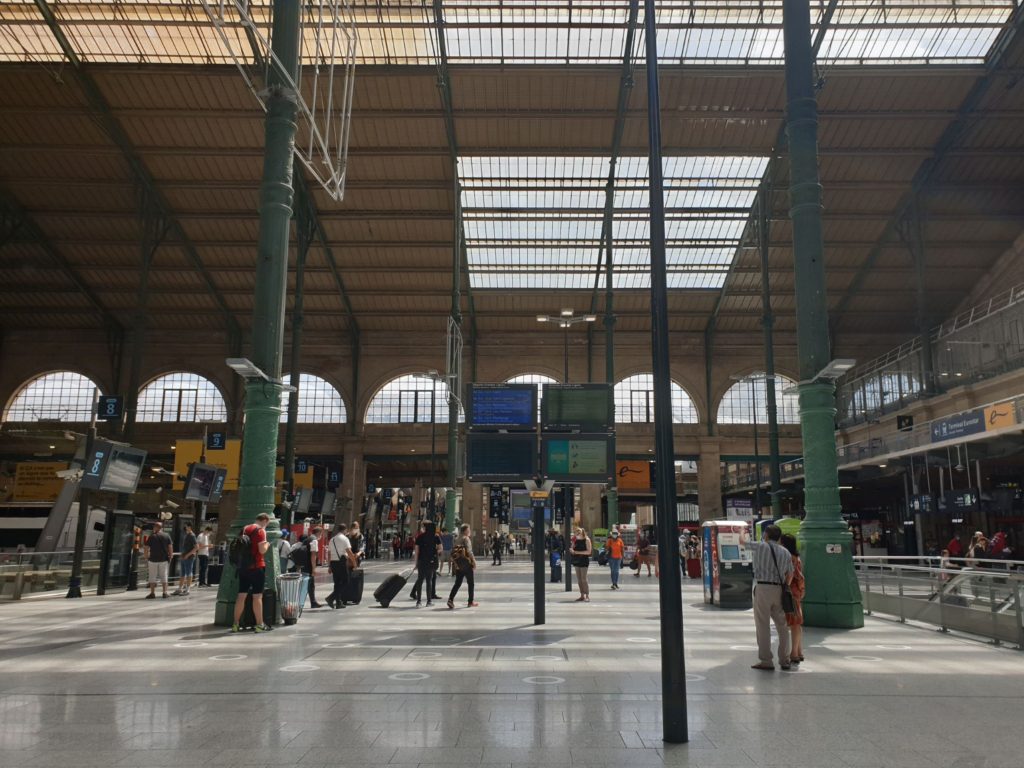
Le Goff recommends this statue in front of the station. I’m not so sure, though the graffiti adds a nice touch.
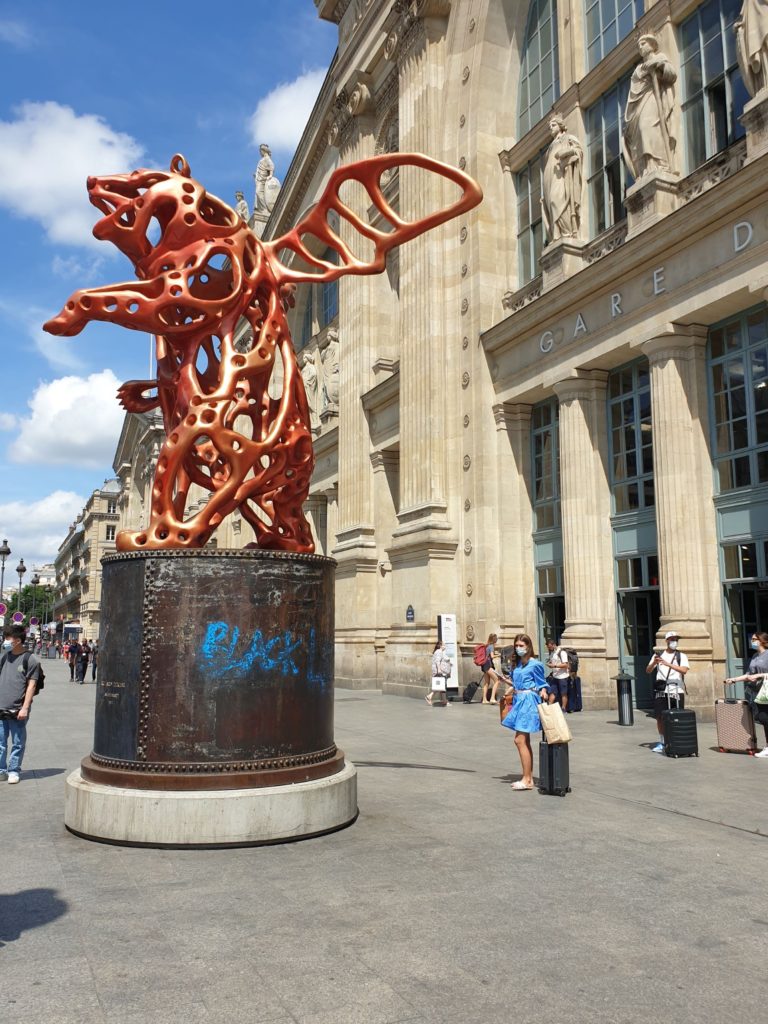

From there I headed north on the Boulevard Magenta, making sure to stay off the bicycle path. I had ridden my bike, perilously, on that same path the previous Saturday afternoon.
At the top of the boulevard was the Louxor Cinema, a still-functioning (and recently reopened, like all movie theaters) Art Deco hall built in 1921. Unfortunately, the terrace with the view wouldn’t open until the evening. But it was a reminder of how much one misses in Paris just by not paying attention. I’d been at this corner, just under the No. 2 elevated Metro line at Boulevard de la Chapelle, many times, and never noticed it.
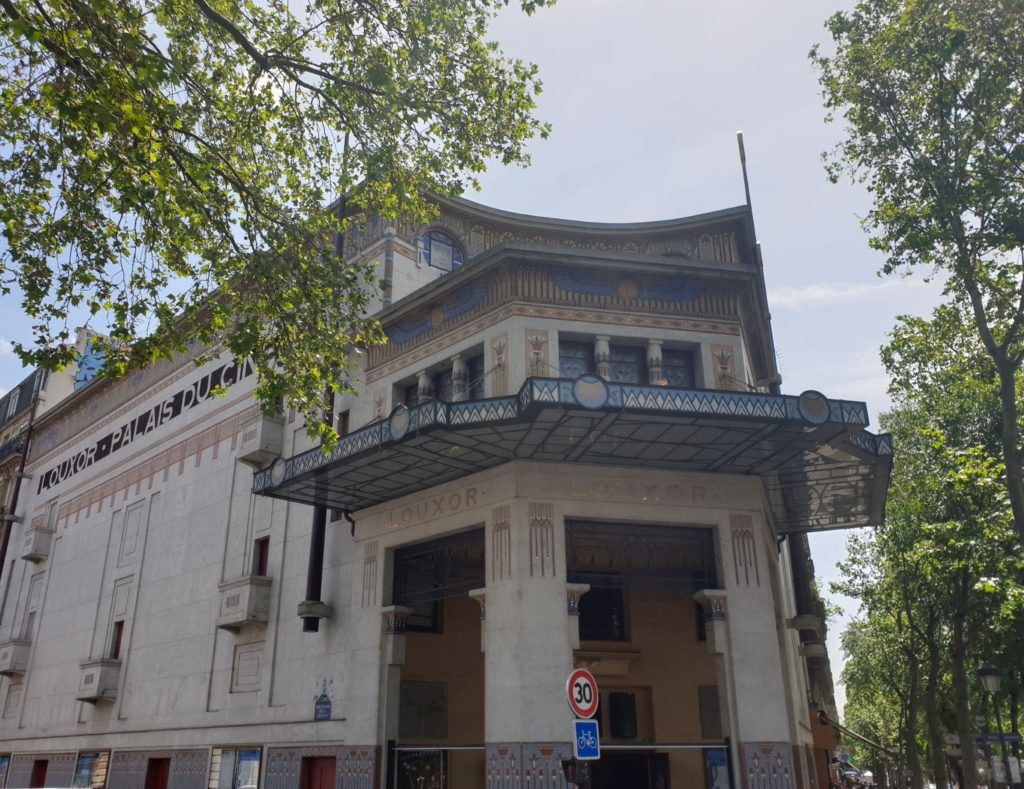
I walked north up the hill along Boulevard de la Chapelle, with a few zigzags, and started feeling a little peckish. I bought a pain au chocolat as the bakery proprietor cheerfully chatted in Arabic to another customer.
The architecture of this quarter, in the 18th arrondissement, is a combination of glass-and-steel modern and flat-front industrial of the pre-Haussman era. The older structures were built in the 1840s, before the area was incorporated into Paris proper. The little signs at the right are part of a grouping of up-and-coming designers taking advantage of the cheap real estate to open stores. Unfortunately, almost all were closed.

At the top of the rise, I stepped into a little park flagged in “Another Paris,” the Square Léon. Just as Le Goff had described, locals were hanging out playing chess on the public boards.
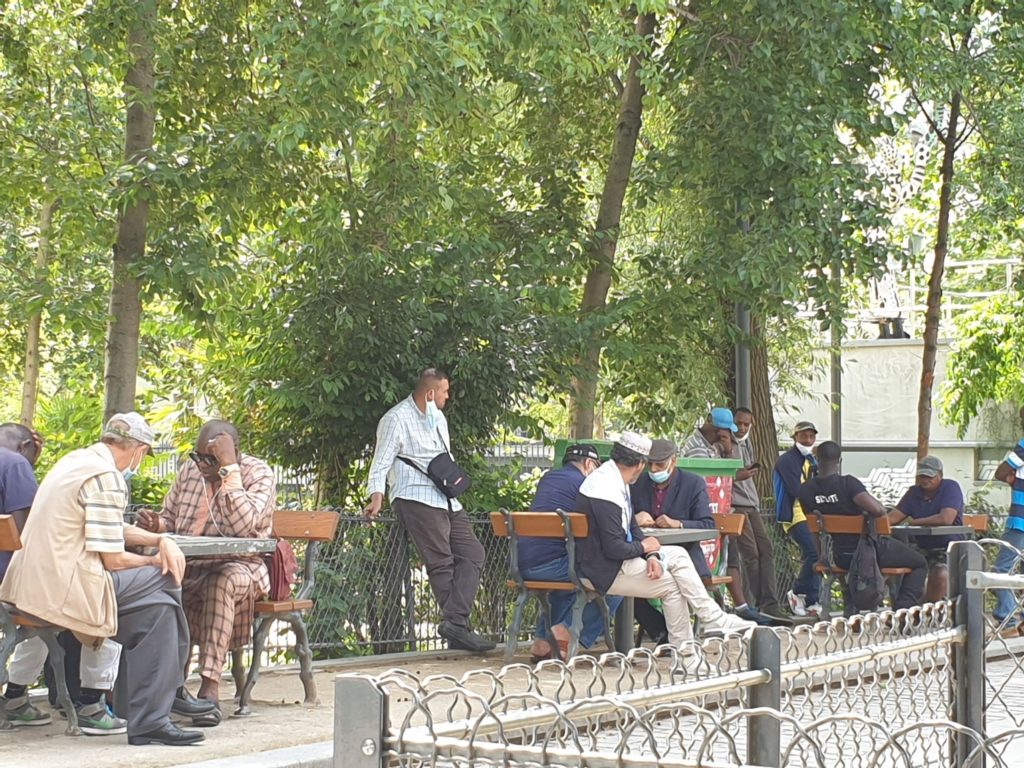
I took a rest on a bench, ate my pain au chocolat and enjoyed the wall mural across the way.
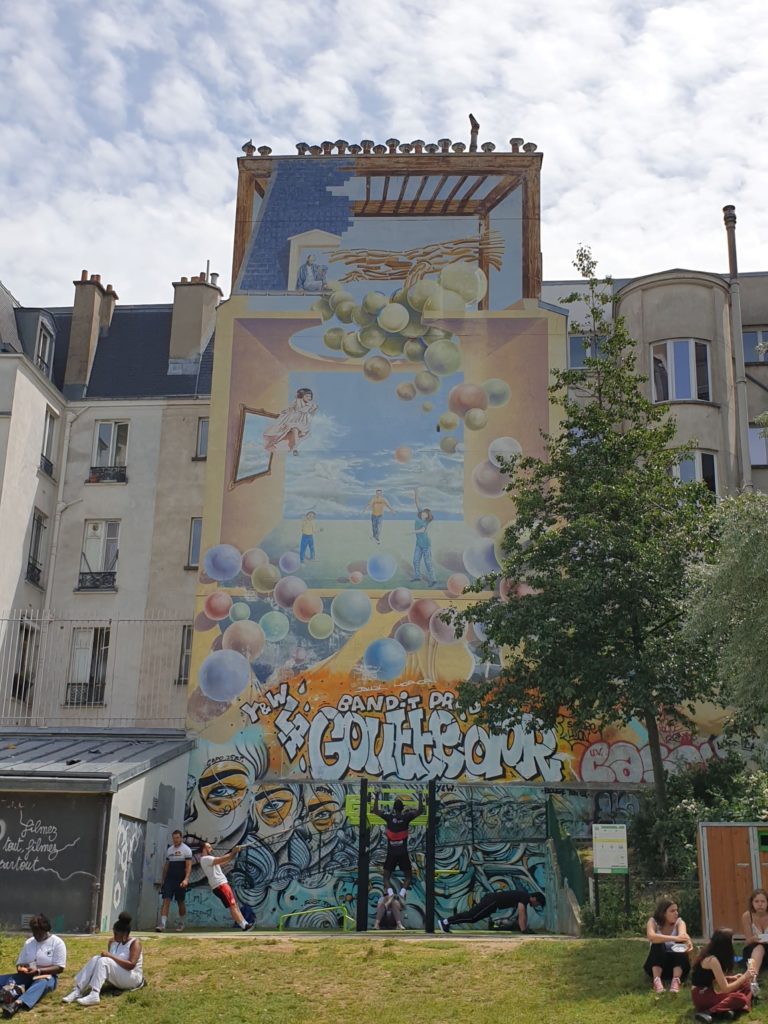
And I reflected on why I find this kind of walk so invigorating. I’m not particularly a fan of street art, or industrial architecture, or even Art Deco. I decided it was the challenge of new places and potential adventure, not to mention bragging rights to visitors who have never even heard of most of these sites.
Anybody and everybody goes to Shakespeare & Co. when they’re in Paris. Far fewer visit my next stop: an iconic street-art museum, the Echomusée, just north of the park. The stylized map on the front represented much of my walk’s path.
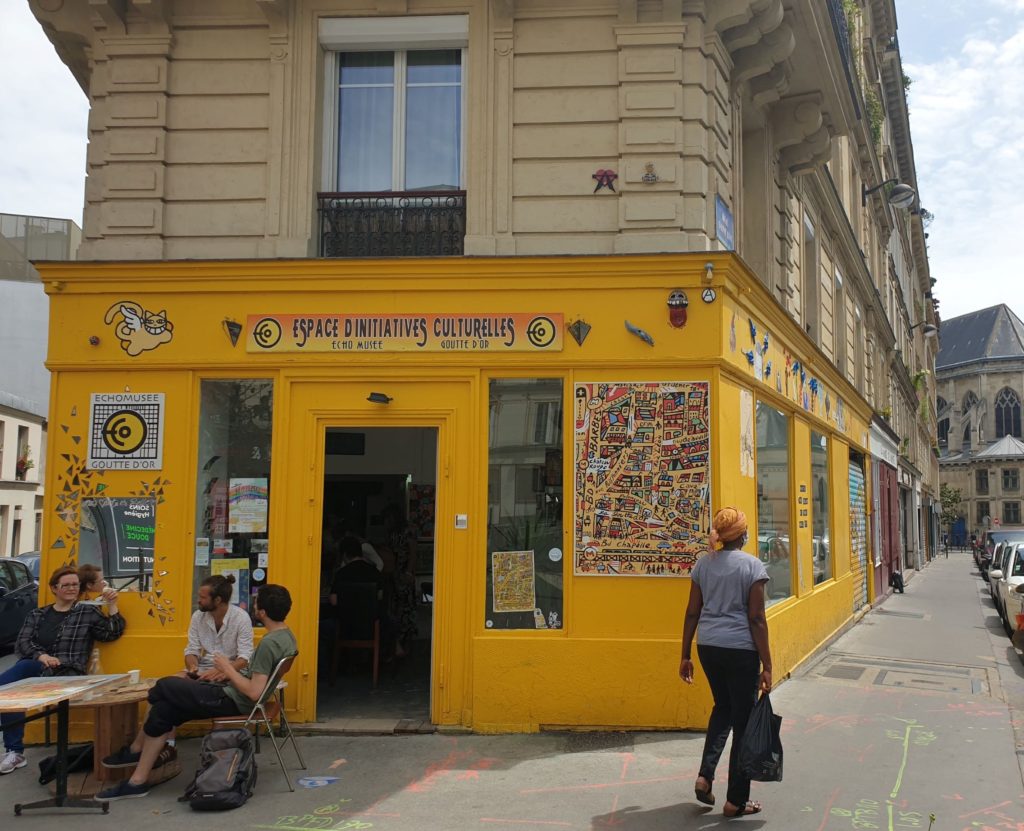
I was in the heart of the Goutte d’Or, a buzzing ethnic neighborhood I wrote about during the first lockdown, more than a year ago. I’d been to it many times, but never to this remarkable institution, which presents the work of street artists on its walls. I was lucky: The proprietor, Jean-Marc Combeau, was there, and happy to chat.
He’d run the space for 30 years, he said, exhibiting thousands of artists and putting on hundreds of shows. Was he glad to be able to start them up again now that lockdown rules permitted? I asked. “I never stopped,” he said with a smile. Even though we were indoors he eschewed a mask (though he did admit he’d been vaccinated.)

He loved what he did but regretted that the neighborhood was starting to gentrify. I’d heard this before, that tour groups were coming to La Goutte d’Or in a phenomenon the locals called “zoo tourism.” On the plus side, he’d hosted a group of African-American tourists not long ago, he said, and reported that they were thrilled to see locals in African garb.
Just down the street was a church that was more than a church. L’Eglise Saint Bernard has long been a center of leftist and Communist activity in the neighborhood, occasionally playing a role in national politics.
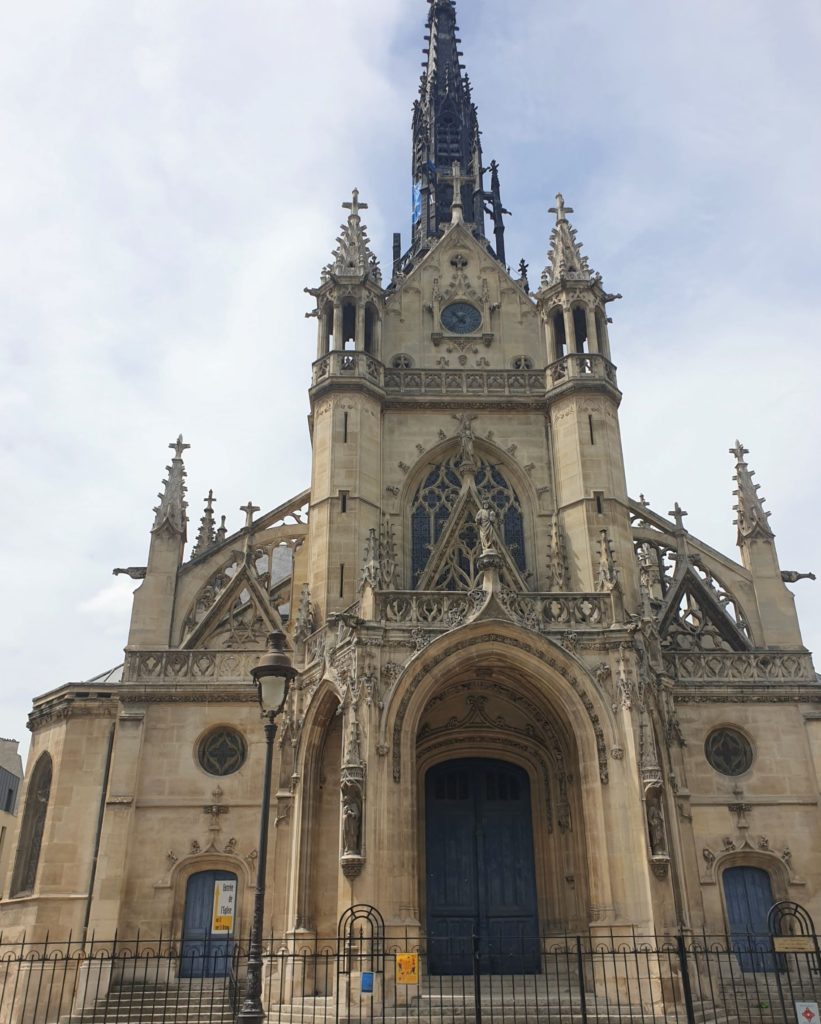
In the summer of 1996, just as I arrived in Paris as a correspondent for the Washington Post, more than 300 immigrants without papers, mostly from Senegal and Mali, occupied the church in an attempt to keep from being deported. They were supported by aid groups and leftist parties.
I went there then to view the scene. The entire floor of the church was covered with sleeping bags and blankets. People sat quietly, washed from buckets, lined up at the food tables, tolerated the television cameras and received various dignitaries; the then-head of the Communist Party showed up when I was there.
Just a few days later, police emptied out the church, using tear gas and clubs. The church acquired the nickname Notre-Dame-des-Sans-Papiers, that is, Without Papers. According to the linked article, it was the first time French citizens came to understand the limbo that applicants for immigrant and refugee status were in. Demonstrations followed, though I’m not sure anything has fundamentally changed. Today, church volunteers serve an outdoor lunch to about 100 “sans papiers” every weekend and the building shelters 10 or so people every night during the winter.
Time was running out. I hurried to the rue Ordener to see Paris’s longest wall of street art – 100 meters of big fat letters, ghostly faces, undecipherable acronyms and geometric figures, topped by barbed wire (railroad tracks heading up from the Gare du Nord were below on the other side).

I walked past Paris’s first cooperative, a peaceful square and an Art Deco municipal swimming pool to arrive at the end of the walk at Porte de Clignancourt (Le Goff’s walk goes farther north, into Saint-Ouen, which I’ll try some time).
There I stopped at La REcyclerie, a remade train station over the Petite Ceinture tracks that used to encircle Paris. There you can eat, bring compost (if you’re a member), borrow many kinds of repair tools and recycle many things. Much of the food served there comes from the garden on the left side of the unused tracks below the eating area. A community garden occupies the right side.
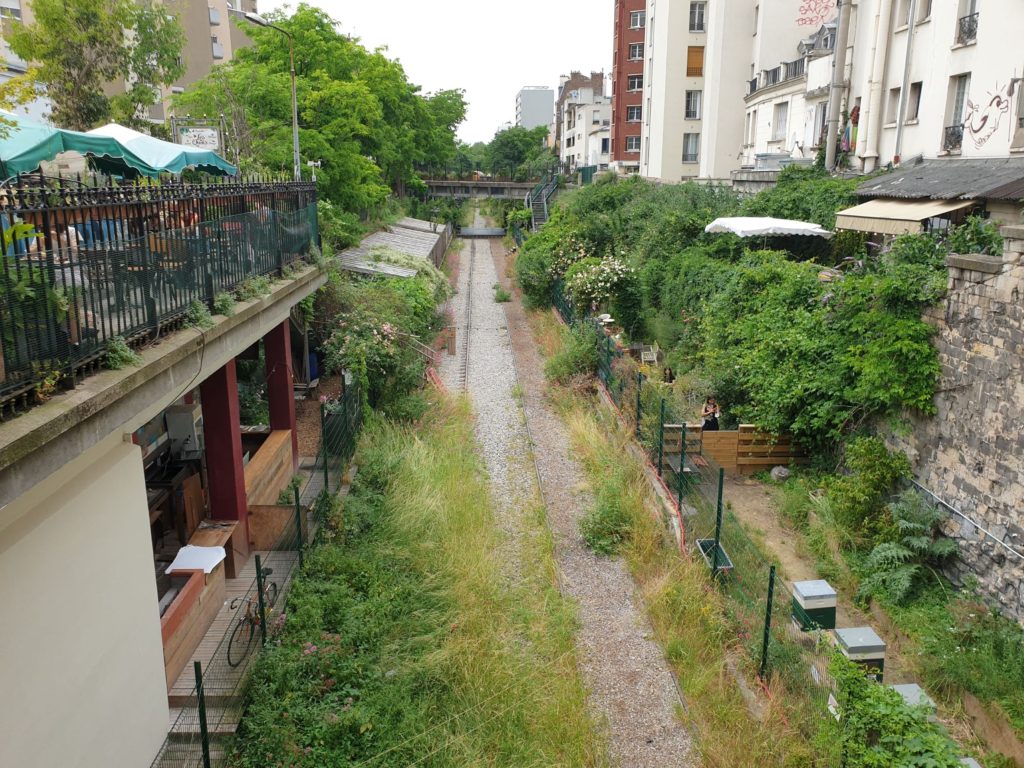
I was running out of energy and cell-phone battery, so headed home.
Le Goff has nine other walks in his wonderful book. It may take a while, but I hope to try them all.
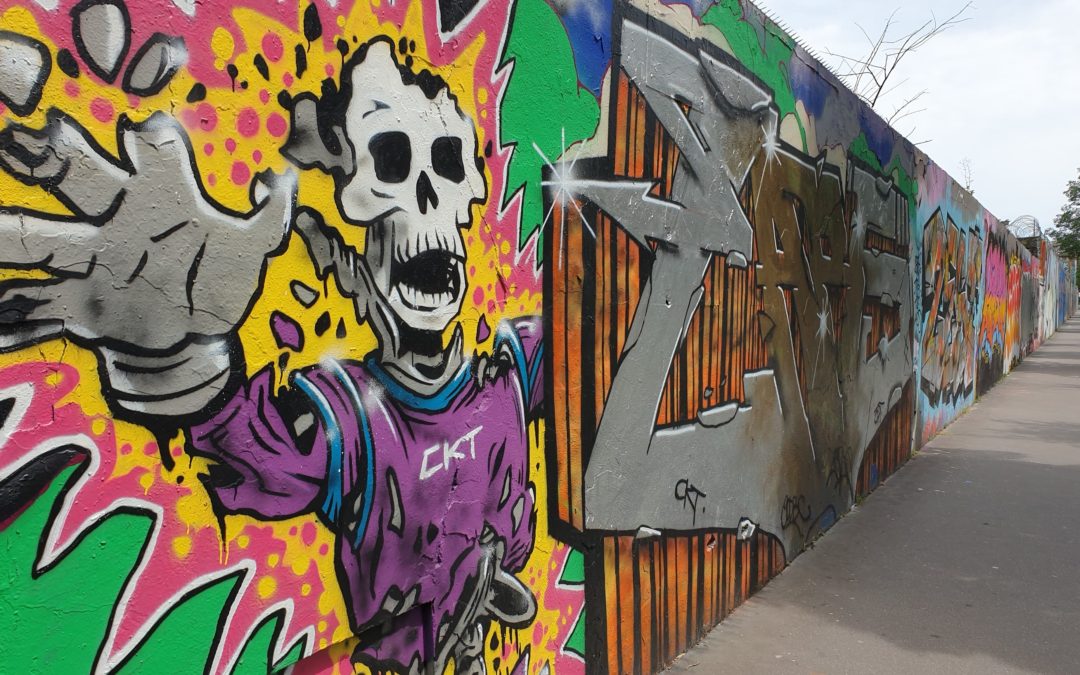
I just love reading about Paris! I’ll have to buy Le Goffs book.
Thank you for these offerings.
Winky
Thanks, Winky! I’m so glad you enjoy the posts!
Thanks for the guided tour. While frequent visitors to Paris we tend to stay in the same area for some days before driving South , PACA mostly. So, mostly shop and provision for the trip. L’épicerie de Paris (Bon Marché) Never visites the areas you covered.
Thanks Anne! A great article about a vibrant neighbourhood that’s often ignored in the tourist itineraries!
I wrote about La REcyclerie a little while ago, when compiling a list of former transport infrastructure now used to serve communities in other ways. Theirs is not the only urban farm in the 18th that I came across: there is also La Caverne, in a disused underground car park. https://fabricofparis.com/2019/11/26/repurposed-transport-community.html
PS: with my transport nerd hat on I can’t help but point out that the elevated metro that passes the Louxor is in fact line 2
🤓
Oh my goodness, it sure is. Since I live on the 3 line you’d think I’d remember, will fix. And I look forward to reading about La Caverne! There is also that restaurant in the gare in the 16th but given the purposes and location it doesn’t really count.
Thank you Anne. Your travels through the city of Paris are very insightful. Hopefully we will one day be able to get back to this beautiful city and follow in your footsteps.
Be sure and look me up when you do! Many thanks, Gary.
Thanks for taking us with you on your adventurous walk through one section of Paris, Anne.
You are so welcome, Mary!